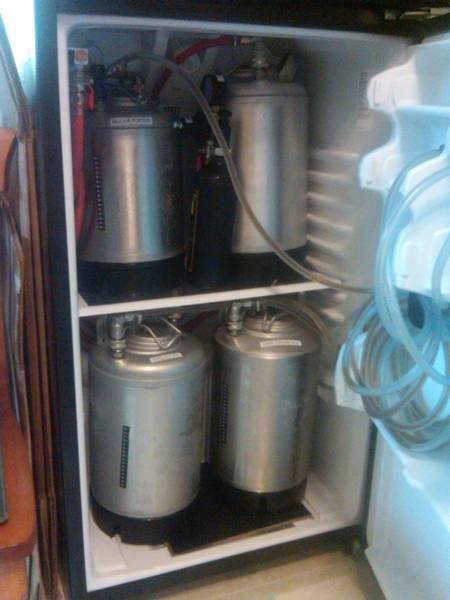swallace
Active Member
The goal here is to minimize space required and to have a continuous supply of keg'd home-brew.
I brew 5 gallon batches. I'm planning on primary fermentation only, for about a month long.
I just purchased 2x2.5 gallon kegs (so I can fit 1 in my refrigerator). I'm thinking I may brew a batch every month or so, but it may be less frequent. I figured I would probably have to buy 2 more kegs to keep a constant rotation but I haven't quite figured it all out yet.
I bought the 2.5 gallon kegs thinking that I could keep one in the fridge at all times but after doing more research, I'm discovering this may be a bit more complicated than I originally thought.
I plan on purging the oxygen and adding enough co2 to seal the lid in any keg I don't plan on refrigerating right away. Will this be enough to 'age' the beer if left this way for 3+ weeks? Could I just do a quick, force carb when I'm ready for the beer after that?
Has anyone attempted this and figured out a routine?
thanks in advance.
I brew 5 gallon batches. I'm planning on primary fermentation only, for about a month long.
I just purchased 2x2.5 gallon kegs (so I can fit 1 in my refrigerator). I'm thinking I may brew a batch every month or so, but it may be less frequent. I figured I would probably have to buy 2 more kegs to keep a constant rotation but I haven't quite figured it all out yet.
I bought the 2.5 gallon kegs thinking that I could keep one in the fridge at all times but after doing more research, I'm discovering this may be a bit more complicated than I originally thought.
I plan on purging the oxygen and adding enough co2 to seal the lid in any keg I don't plan on refrigerating right away. Will this be enough to 'age' the beer if left this way for 3+ weeks? Could I just do a quick, force carb when I'm ready for the beer after that?
Has anyone attempted this and figured out a routine?
thanks in advance.





